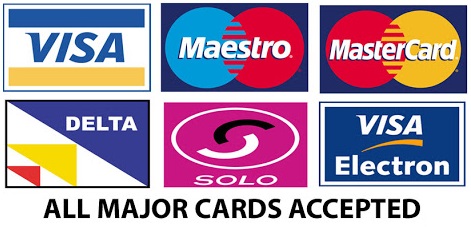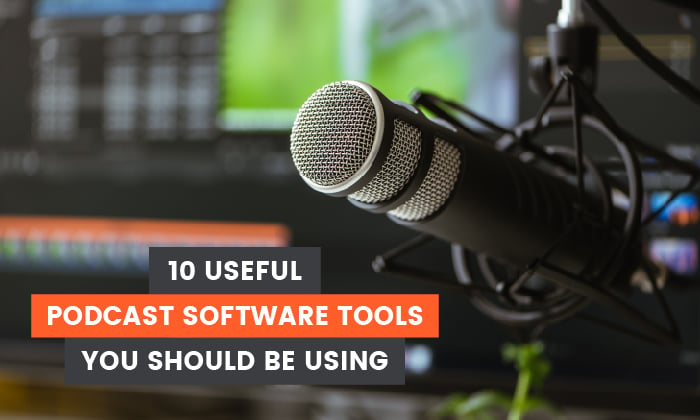
eMarketer predicts businesses will spend $1 billion on podcast ads in 2021, and 54% of podcast listeners are more likely to buy a product recommendation.
Before you hit record and start carving out a slice of the podcast pie for your brand, you need somewhere to record, edit, and publish your episodes.
With so many podcast software options out there, it can feel a bit overwhelming deciding what is best for you.
- Some are only for professionals, while others skew towards beginners
- Some do everything, while others only record
- Some are free and easy to use, while others are expensive, with a steep learning curve
In this post, we’ll take a look at some of the top podcast software options available to help you pick the best one to fit your needs.
10 Useful Podcast Software Tools
Not all podcast software tools are created equal.
Some only solve one specific task, while others give you a full suite of features to help you record, edit, and publish your podcast to the world.
Here’s what you can expect from each option to help you decide whether it’s a good fit for your experience level and needs.
Tool #1: Audacity – Great Free Podcast Software for Beginners![]()
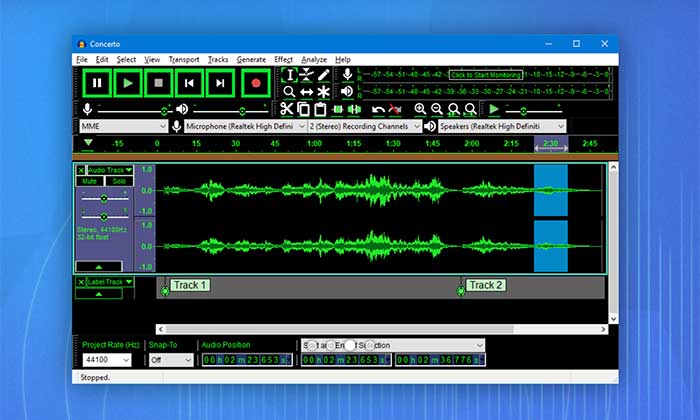
Audacity is a free, open-source digital audio workstation. While it doesn’t come with all the bells and whistles as some of the other paid options on this list, it still packs a punch.
Audacity comes with all the features and basic editing options a first-time podcaster needs to create, produce, and publish a professional podcast.
Record live audio or digitalize audio files from other media types. Cut, splice, and edit everything in one place, and export your podcast into different file formats (including MP3, WAV, AIF).
No audio editing experience necessary.
Pros of Audacity
- Free to use
- Compatible on Windows, Linux, and Mac
- Full recording and editing options
- Supports most audio file formats
- Supports 16-bit, 24-bit, and 32-bit audio quality
- Powerful features like Silence Finder, Truncate Silence, Sync-Lock, and saveable EQ
Cons of Audacity
- No multitrack recording
- Can’t upload directly to a podcast hosting platform
- No advanced editing features
- No mobile app
Audacity Pricing
Audacity is free as of the time this article was published.
Tool #2: Auphonic – The Personal Audio Engineer on a Budget
Auphonic is an AI post-production software tool that can clean up your audio files with the click of a button.
Designed for podcasters who use an interview format, Auphonic’s easy-to-use interface will automatically level your audio levels and make you sound like a pro, all at a very reasonable price.
All you need to do is upload your audio, and the AI algorithm will identify different voices and music. Then, it will process and optimize the sounds separately to fine-tune the audio quality of your podcast.
Pros of Auphonic
- Automatically balances levels between speakers, music, and speech
- Transcribes audio to over 80 languages
- Automatic content deployment to YouTube, SoundCloud, Google Drive, Podlove, and more
- Automatic noise and hum reduction
- Mobile apps available: Android Audio Editor and iOS Recorder
- Works on Mac and Windows
Cons of Auphonic
- Not a good option for podcasters who want a high level of control over their audio files
- No options to manually trim or edit audio
- No recording capabilities
Auphonic Pricing
Auphonic is one of the most affordable podcast software options. You can get two hours of free audio per month, and paid subscription plans start at $11 per month.
Tool #3: Alitu – The Easiest Way to Edit a Solo Podcast
Simplify your podcast editing with #Alitu! It has literally saved me HOURS of final mixing, audio equalizing, and removing all my nervous "Umms" and awkward silences ? The 7 day free trial was enough to convince me.https://t.co/pcF4rlL6v5@thepodcasthost #PME20 pic.twitter.com/ZCOzB1ukr2
— ?On Second Watch?Podcast (@OSWpodcast1) March 4, 2020
Alitu is one of the most useful podcast software tools for people who want the editing and production process to be as simple as possible. This web-based tool helps you automate the production of your podcast by assisting with leveling, compression, conversions, and noise reduction.
You can also use Alitu to edit out mistakes and trim recordings, and you can even build out your episodes by adding music, ad breaks, and transitions with its drag and drop interface.
One thing to keep in mind: Alitu’s web-based recording shouldn’t be used for snippets longer than five minutes. The browser tech isn’t the most reliable, and you risk losing your audio. Instead, use the recording feature for intros, outros, or ad slots.
If you’re hosting a solo podcast that has uncomplicated edits and doesn’t need a ton of creative production, Alitu is pretty much all you need.
Pros of Alitu
- Made for podcasters
- Fully web-based; no software downloads required
- Automates converting and cleaning up audio files
- Drag and drop episode builder
- Free theme music and effects
- Easy to remove any mistakes or add music and fades
- Option to add ID3 tags and publish directly to your podcast host
- Teaser template
- No learning curve
Cons of Alitu
- Limited editing tools compared to a DAW
- Limited control over audio quality and file formats
- Web-based recording not reliable for full episodes
Alitu Pricing
Alitu is $28 per month or $280 per year. If you want to test out the podcast software before you commit, they also offer a free seven-day trial.
Tool #4: Hindenburg Journalist – Comprehensive Podcast Software to Record, Edit, and Publish on the Go

Hindenburg Journalist is a multitrack audio editor and publisher for the podcaster on the move.
With no external hardware or high-end computer needed, you can record, edit, and publish your episodes from a cafe in Paris or the train ride home.
If you’re looking for a comprehensive option and don’t mind paying for it, you can’t go wrong with Hindenburg.
It offers a suite of tools for organizing and editing your audio files and publishing your episodes, and it includes powerful features like the noise-reduction effect.
Pros of Hindenburg Journalist
- Compatible with Windows and Mac
- Lets you record anywhere with the Hindenburg Field Recorder app
- Supports all types of audio files
- Extracts the best audio quality and automatically sets audio levels
- One-click podcast upload to Soundcloud, Libsyn, and Loudness
- Voice profiler sets EQ on voices
- Clipboard feature to store clips for later use
Cons of Hindenburg Journalist
- More expensive than other options
- Has a learning curve for beginner podcasters
- Multitrack recording only available in the Pro version
- Noise reduction feature not included with the basic version
Hindenburg Journalist Pricing
Choose between Hindenburg Journalist ($95) or Hindenburg Journalist Pro ($375). Not sure which is best for your needs? Test out both options with their free 30-day trial.
Tool #5: Adobe Audition – The Ultimate Professional Podcast Software
or professional podcasters who have skin in the game, it doesn’t get better than Adobe Audition.
The digital audio workstation gives you complete control over recording, editing, and exporting your episodes straight to your audience.
Audition lets you combine audio files, batch edit to produce podcasts faster, and comes with advanced features like:
- Background noise reduction
- Compression
- EQ
- Multitrack recording
- Custom recording templates and hotkeys
Here's how I've used dynamics processing to adjust the noise floor in Adobe Audition.
Learn more about processing your dialogue audio in the full video – https://t.co/mwuy0kQ5Df#adobe #voiceover #voiceacting #tech #mixingandmastering #proaudio #maudio #studiomonitors pic.twitter.com/GIEWpke25C
— Anthony Pica (@AVOsJOURNEY) January 4, 2021
It’s important to note that while veteran podcasters can appreciate these impressive capabilities, beginners might not use enough advanced features to justify the high price tag.
Pros of Adobe Audition
- Part of the Adobe Creative Suite
- Fully-fledged pro-DAW with tons of advanced features
- Podcast-specific settings
- Android Audition Toolkit app to record, edit, and convert audio files
- Royalty-free sound effects library
- Essential Sound Panel to remove unwanted noises and achieve smooth sound
- Available on Mac and Windows
Cons of Adobe Audition
- Pricy monthly subscription
- Not the best option for beginners
Adobe Audition Pricing
Get Adobe Audition for $20/month, or you can access it for free with a subscription to the full Adobe Creative Cloud Suite.
If you want to give it a test run, try out their free seven-day trial.
Tool #6: Buzzsprout – A Simple Way to Host Your Podcast![]()
After you record and edit your episodes, your podcast needs somewhere to live.
Enter Buzzsprout. It’s one of the easiest ways to host, distribute, share, and track your podcast. The platform streamlines features, favoring simplicity to get your episodes out into the world as quickly as possible.
Buzzsprout’s feeds are compatible with the top podcast directories in the world, helping you reach millions of potential listeners on Apple Podcasts, Spotify, and more.
Once your podcast starts growing and you inch closer to 10,000 downloads, you can use the platform’s analytics dashboard to learn more about your listeners.
Pros of Buzzsprout
- Immediate publishing or episode scheduling
- Magic Mastering feature optimizes your files automatically
- Lets you add episode transcriptions
- Option to add apodcast player to your website
- Podcast analytics
- Easy to use
Cons of Buzzsprout
- No advanced analytics
- No advanced features
Buzzsprout Pricing
Buzzsprout lets you try out the software for free for 90 days. Paid plans start at $12 for three hours of audio per month.
If you go over your time limit, you can upload additional content for $4 per hour.
Tool #7: Logic Pro X – A DAW for macOS Users
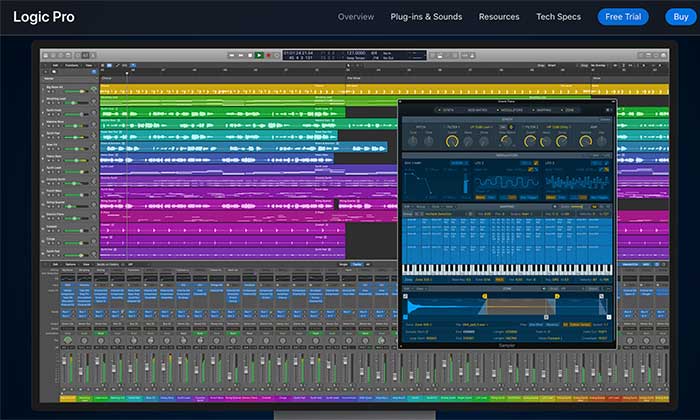
Logic Pro X is a full-featured audio editing and music production program for Apple users. You can use the DAW on your Mac, iPhone, and iPad, making it easy to edit your audio files on the couch or at the beach.
While the software does come with solid audio mixing tools and robust features to help you create a professional podcast, it was made with music producers in mind.
Unless you know your way around a mixing board, you might choose to find something more straightforward to use.
Pros of Logic Pro X
- You can record and edit audio files with your iPhone or iPad with the Logic Remote app
- Professional-quality mixing and mastering
- Works with a variety of plugins
- Offers post-production effects
- Multiple automation features
Cons of Logic Pro X
- Only available on Mac
- Most features are for music production
- May be too complicated or expensive for simple podcasts
Logic Pro X Pricing
You can try out the software with a free 90-day trial before purchasing Logic Pro X for a one-time cost of $199.99.
Tool #8: Reaper – An Affordable Digital Audio Workstation for Podcasts
Reaper is an affordable and powerful DAW that can run on Windows, macOS, and Linux.
It’s the perfect choice for podcasters using older computers or those wanting a piece of software that won’t hog memory and computer resources. Reaper is incredibly lightweight (it can run from a USB drive) and is faster than other software programs, with minimal crashes.
Beyond that, what makes Reaper one of the top podcast software tools is its price point. For less than $100, you’ll get access to full multitrack audio and MIDI recording, mixing, processing, editing, and mastering tools.
Pros of Reaper
- Compatible with Windows, Mac, and Linux
- Excellent value for money
- Fast load and operating times
- UI/UX customization
Cons of Reaper
- Complex plugin integration
- No mobile app
- Not many online tutorials
Reaper Pricing
Download Reaper and activate the free 60-day trial. After that, you can pay $60 for a discounted license or $225 for a commercial license.
Tool #9: SquadCast – Record Studio Quality Podcasts From Anywhere
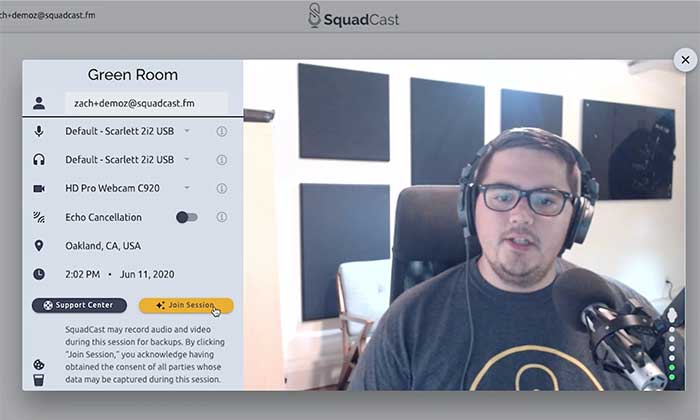
SquadCast is an all-in-one remote podcast recording solution that aims to simplify post-production and collaboration.
With SquadCast, you can say goodbye to audio sync issues, lost recordings, and confusing software for guests.
Wondering how it works? To get started, the host makes an account and sends an invite link to a maximum of three guests. While you record the episode, SquadCast records an audio file and uploads it in real-time to the cloud and your local drive. When you stop recording, SquadCast gives you access to each person’s separate audio track, which you can drop into a DAW for editing.
Pros of SquadCast
- Video capability to see your guests while you record
- Guests don’t need an account
- Podcasts backed up on the cloud
- Multitrack recording
- Eliminates audio drift and simplifies editing
Cons of SquadCast
- Not the cheapest recording option
- No automatic editing on tracks
- Can’t record the video for YouTube podcasts
- Three guest limit
SquadCast Pricing
SquadCast offers a free seven-day trial on any of their paid plans. Subscriptions start at $10 per month for two hours of audio recording and $20 for five hours.
Tool #10: Zencastr – Affordable Long Distance Recording Software With HD Video
Does your podcast feature call-in guests or a co-host who lives halfway around the world?
If so, software like Zencastr can make remotely recording your podcast so much easier.
Similar to SquadCast, the web-based tool comes with multitrack recording and records each side of the conversation separately. At the end of the episode, the files are stored locally and in the cloud. Zencastr then syncs them together to produce a high-quality recording.
Pros of Zencastr
- Easy-to-use platform
- Free and paid options
- Records HD video so you can upload your podcasts onto YouTube
- Records separate lossless WAV tracks locally and in the cloud
- Soundboard for live editing
- Automatic post-production
- Built-in VoIP
- Unlimited guests
- Up to three hours of recording time per session
- Guests only need a link to join
Cons of Zencastr
- No hosting or publishing tools
- Limited features with the free version
Zencastr Pricing
Zencastr has a free version that comes with eight hours of recordings and a maximum of two guests.
If you want access to some of the more advanced features, you can opt-in for the $20 per month pro version. It has a 14-day free trial and boasts unlimited guests, unlimited recordings, live soundboard recording, and more.
Conclusion
Finding the best podcast software can feel overwhelming, but don’t rush your decision. My setup for the Marketing School Podcast looks different today than when we first started, and that’s OK.
Take the time to experiment with the different options and find the best fit for your show.
Once you’ve nailed down your recording, production, and exporting process, you can start focusing on things like your podcast’s SEO to grow your audience and reach your download goals.
What are you struggling with the most when it comes to choosing podcast software?
The post 10 Useful Podcast Software Tools You Should Be Using appeared first on Neil Patel.




